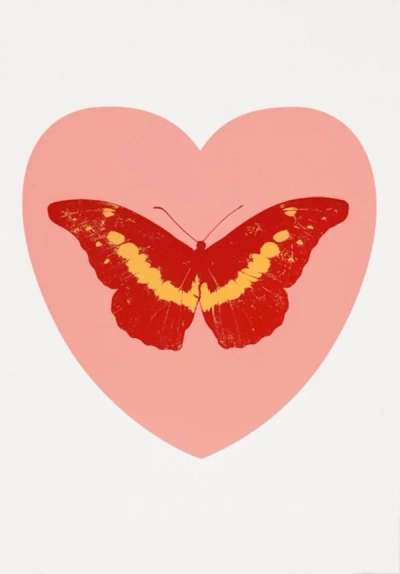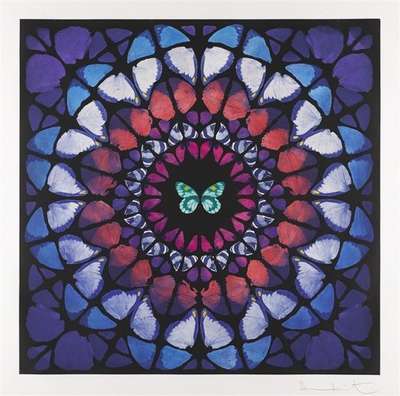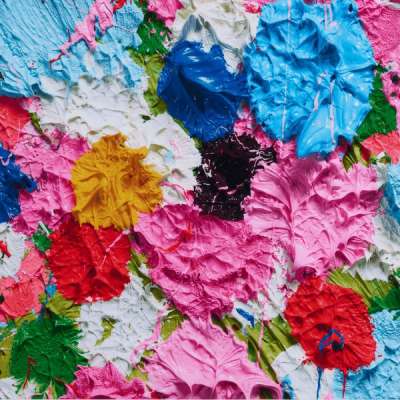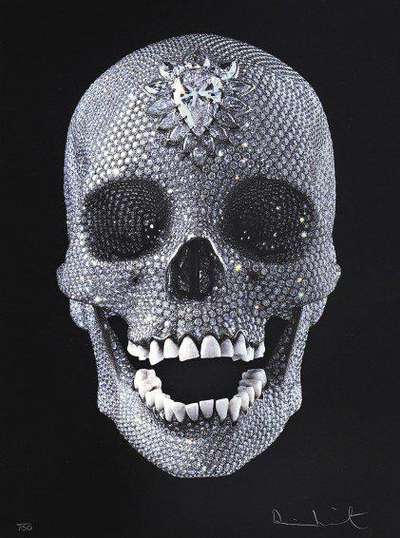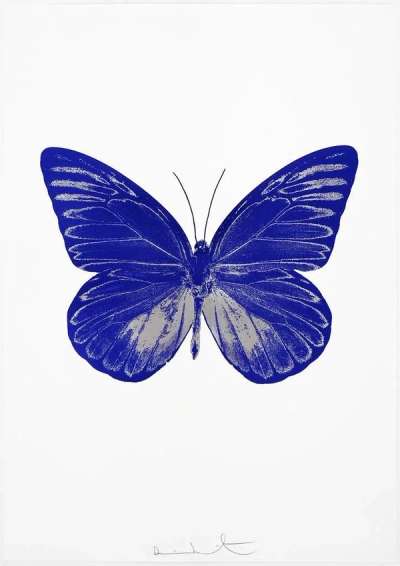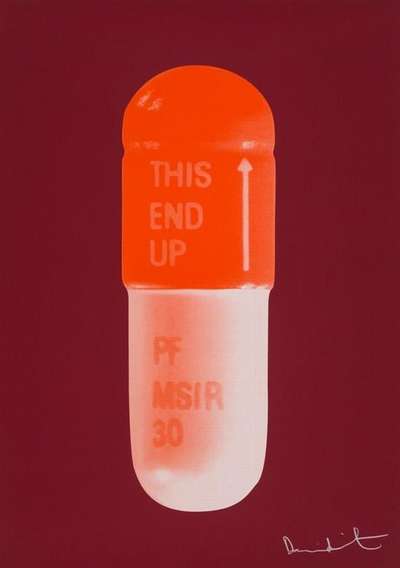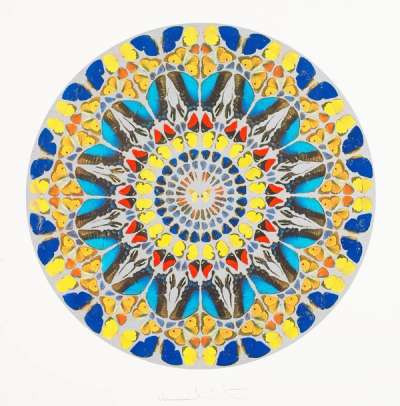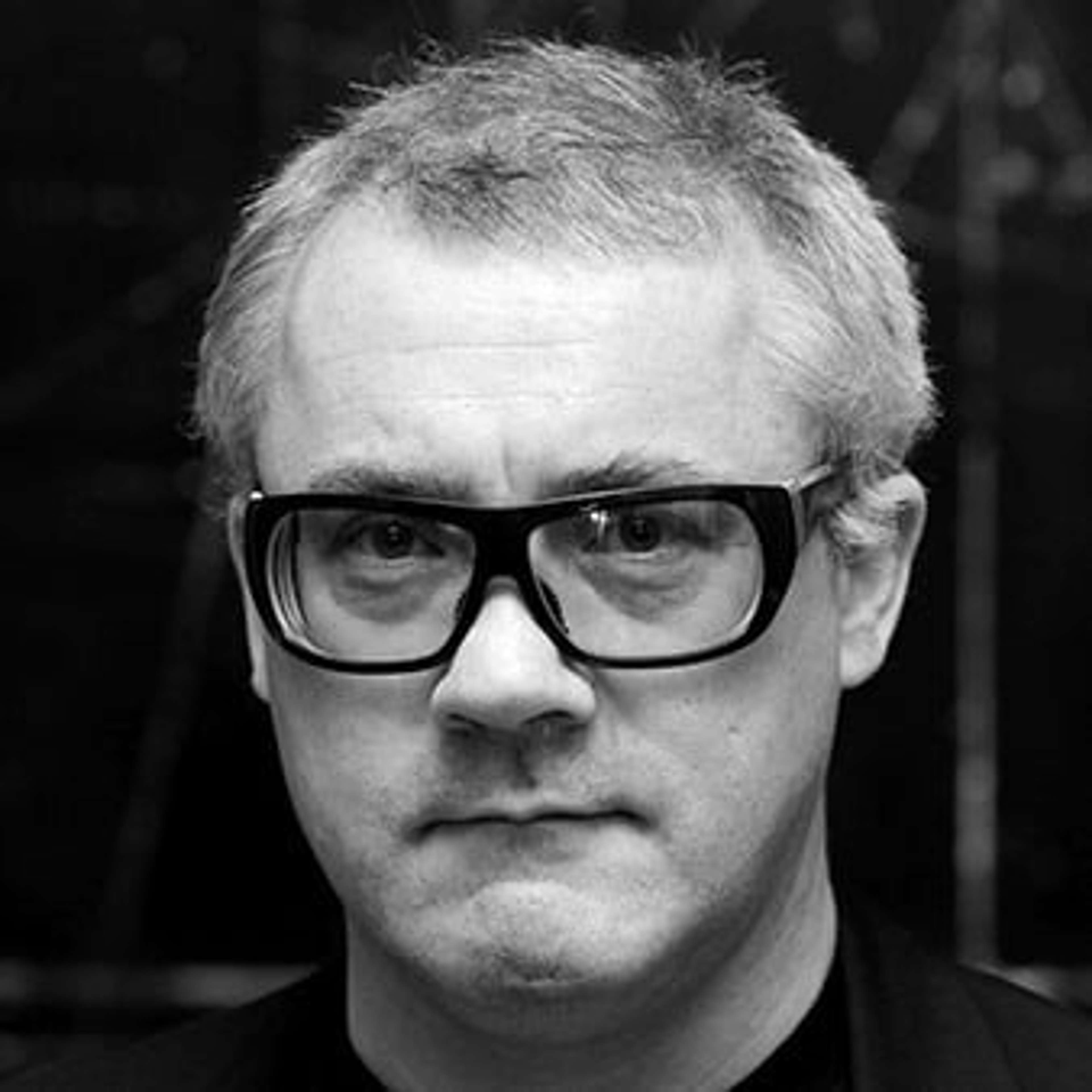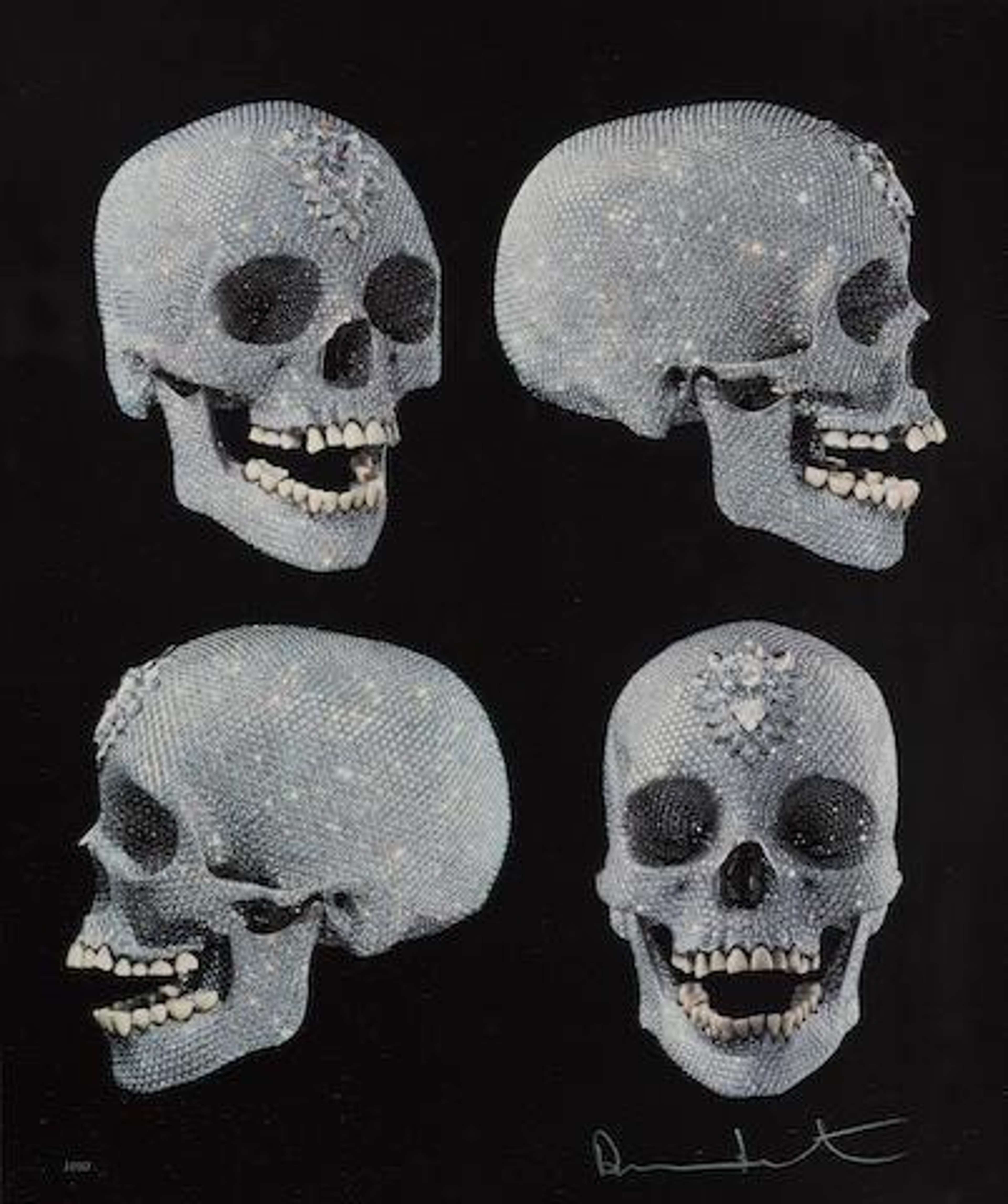Damien Hirst’s Assistants vs. Renaissance Workshops

 Image © Heni / Damien Hirst Holding One Of The Beautiful Paintings © Damien Hirst 2023
Image © Heni / Damien Hirst Holding One Of The Beautiful Paintings © Damien Hirst 2023
Damien Hirst
673 works
Damien Hirst is one of the most celebrated yet controversial contemporary artists, and much of the criticism aimed at him stems from his significant reliance on assistants for the creation of his works. For Hirst, the utilisation of assistants is not merely a logistical convenience, but rather an integral component of his conceptual approach. It challenges notions of authorship, originality and the very nature of his process. Drawing parallels to the factory-like studios of Warhol, Hirst's approach offers a unique perspective on the evolution of artistic production and illuminates the evolving dialogue surrounding the artist’s hand in art throughout time.
Renaissance Workshops: Looking at Early Historical Precedents
During the Renaissance period, the use of assistants in artists' workshops was widespread and integral to the practice of art creation: the workshop was not only a place of production but also a site for training aspiring artists. These workshops were typically headed by a master artist, who would take on apprentices to learn the craft. In many cases, the master artist would often only do the initial drawing and his assistants would carry out the actual painting.
Leonardo da Vinci, for instance, was an apprentice in the workshop of Andrea del Verrocchio, having joined around age 14. Verrocchio himself had been an apprentice to the master Donatello. At the workshop, da Vinci learned various aspects of painting, sculpture and other artistic techniques. Many other prominent artists trained at the same place, including Domenico Ghirlandaio and Pietro Perugino – each of whom eventually opened their own workshop and trained Michelangelo and Raphael, respectively. Raphael's workshop eventually became prominent in itself, and he had a large number of assistants helping with the creation of artworks. Sandro Botticelli is another famous example of someone who both trained at a workshop and later went on to run his own. He was originally trained by Fra Filippo Lippi, and eventually trained the master’s own son, Filippino Lippi. In this series of examples, we can clearly see the cyclical nature of workshop training and its importance to the development of new talent.
Although usually associated with it, the workshop model was not exclusive to the Renaissance or to Italy. Peter Paul Rubens operated one of the most productive workshops in 17th-century Europe, and trained Anthony van Dyck. Like most masters, Rubens would usually sketch the initial design and paint the key parts of a picture – such as faces and hands. Then, his skilled assistants, who were artists in their own right, would execute the bulk of the painting based on his instructions. It is evident that this model allowed these master artists to produce works on a large scale while ensuring that their style and technique were disseminated through their pupils.
The Impressionists and the Decline of Artist’s Workshops
The Impressionist movement, which emerged in the second half of the 19th century, was instrumental in shifting the norms of art production and, by extension, contributed to the decline of the traditional artists' workshop system. As we have seen, prior to the Impressionists, art was primarily produced in studios and workshops where masters trained apprentices in specific techniques and styles, and works were often collaborative efforts.
However, the Impressionists broke away from these conventions. Artists like Claude Monet, Pierre-Auguste Renoir, and Édouard Manet began to focus on capturing the fleeting effects of light and colour in their immediate environments. This required painting en plein air, or outdoors, rather than in the controlled environment of a workshop. The spontaneity and immediacy of this new approach to painting didn't lend itself to the workshop model, where art was produced methodically based on established techniques. Furthermore, the Impressionists were interested in their personal impressions of the world, emphasising individual perspective and creativity.
This emphasis on personal vision and style further undermined the traditional workshop system, which often required artists to conform to the established styles and methods of the master artist. These shifts in technique, subject matter and the location of art production, coupled with a growing emphasis on individual artistic expression, marked a significant departure from the collective nature of the workshop system, contributing to its decline.
Andy Warhol and The Factory: The Mass Production of Artworks
The idea of an artist’s workshop was reinvigorated with Andy Warhol’s Factory. Warhol's use of assistants was a defining feature of his art-making process and a crucial part of his conceptual approach to art: his studio, known as "The Factory," which was both a literal art factory and a social hub for New York's avant-garde scene, renowned for its assembly-line style of production.
A group of artists, assistants and collaborators helped Warhol create his works, which ranged from silkscreen paintings to films. For instance, in creating his iconic silkscreens of celebrities like Marilyn Monroe or Elvis Presley, Warhol would select and manipulate a photographic image, which would then be silk screened onto canvas by his assistants. This process allowed for the mass-production of artworks, a direct commentary on the commodification and replication inherent to consumer culture and crucial for the ideals of Pop Art.
The production process at The Factory intentionally blurred the line between the artist and the artisan, since Warhol's art was not about the skilled execution of an original piece by a single artist, but about the commentary on celebrity culture. His role was often that of a director, overseeing the process rather than executing each piece personally. His blend of art production and cultural gathering further blurred the lines between art, life and commerce, a hallmark of Warhol's contribution to art history.
Damien Hirst and His Assistants: Why the Criticism?
Many critics argue that Damien Hirst’s reliance on assistants diminishes the authenticity of the work and undermines the ideal of the artist as a singular creative force. Hirst is said to employ over 100 assistants in his studio, although he was strongly condemned for laying off 63 of them during the pandemic – despite receiving £15m in emergency loans from the UK government. David Hockney is often said to be one of Hirst’s most fierce critics regarding the use of assistants, an allegation he has denied through the Royal Academy of Arts. The dispute stemmed from Hockney’s use of the phrase “All the works here were made by the artist himself, personally” on one of his gallery walls – something that many took as a pointed denunciation of Hirst.
The controversy around Hirst and his use of assistants intensified when it was revealed that Hirst only painted 5 out of 1,500 of his famous Spot paintings. The artist has defended himself by saying: “I controlled every aspect of them coming into being and much more than just designing them or even ordering them over the phone. And my hand is evidence in the paintings everywhere. I think it's important that they are handmade but equally important that they look machine-made.” It is evident that for Hirst, the conceptual creation of the artwork is significantly more important than its execution.
As such, many art specialists have come to Hirst’s defence, pointing at the historical precedent and arguing that so much criticism was unjustified. Hirst himself has also given due credit to his assistants, notably to his earliest assistant Rachel Howard, stating that “The best person who ever painted spots for me was Rachel. She’s brilliant. Absolutely f*cking brilliant. The best spot painting you can have by me is one painted by her.” Howard herself has said that their relationship “was a very good symbiotic” one, and the artists remain good friends.
Hirst's use of assistants also aligns with his conceptual emphasis, exploring themes of consumerism and belief systems – for him, the creative process is not confined to the physical act of making, but encompasses the conception of an idea, decision-making on form and execution and reflection on the potential reception and impact of the work. In this broader understanding, even though Hirst delegates part of the production to his assistants, the creative process remains his. This is no different than the process of Jeff Koons, the world's most expensive living artist, who once stated that he was "the idea person. I’m not physically involved in the production. I don’t have the necessary abilities, so I go to the top people." In this way, the pointed criticism directed at Hirst seems unjustified.
While Hirst's use of assistants challenges traditional notions of the 'hand of the artist,' it also offers a powerful exploration of contemporary themes and a profound commentary on the nature of art production in our current era.
Workshop or Original: Does it Matter?
From the Renaissance workshops to the assembly lines of Warhol's Factory, many renowned artists have relied on assistants to actualize their visions. The artist's role, in such instances, has been that of the 'mastermind' behind the work, conceiving the idea and overseeing its execution, rather than physically crafting every element. Overall, the importance of whether an artwork was executed exclusively by an artist or by his workshop depends much on personal taste and opinions.
If we look at the market, reactions to workshop attributions also vary significantly. Many artworks from “the workshop of” achieve similar prices to those attributed to only the artist, while others garner significantly less interest. The notorious Salvator Mundi, for example, is thought by many to have been created by Leonardo alongside his workshop, yet still fetched the highest price ever paid for a painting at auction – although some would argue that Christie’s omission of workshop participation and full attribution to the artist is largely to blame for its high price. On the other hand, Peter Paul Rubens’ workshop doesn’t fare so well: a painting attributed to his workshop was estimated at £15,000-£20,000 at auction in 2022, while an artwork attributed to the artist alone is set to fetch between £4-6 million in 2023.
The discussion of whether workshop involvement matters encompasses various periods of art history, shifts in artistic practices and evolving definitions of what constitutes authorship in itself. From the collaborative environment of the Renaissance workshops to the assembly-line operations of Warhol's Factory and the use of assistants by contemporary artists like Damien Hirst, the relationship between the artist and the physical production of art has constantly evolved. The importance of 'the artist's hand' in a work is largely subjective and depends on cultural, historical and individual perspectives. What remains consistent, however, is the idea that the creative process extends beyond mere execution. Whether produced solely by a master artist or with the assistance of others, art's significance lies in its ability to convey ideas, evoke emotions and provoke thought, affirming that its value is not necessarily tied to the hand that holds the brush, but the mind that guides it.
















